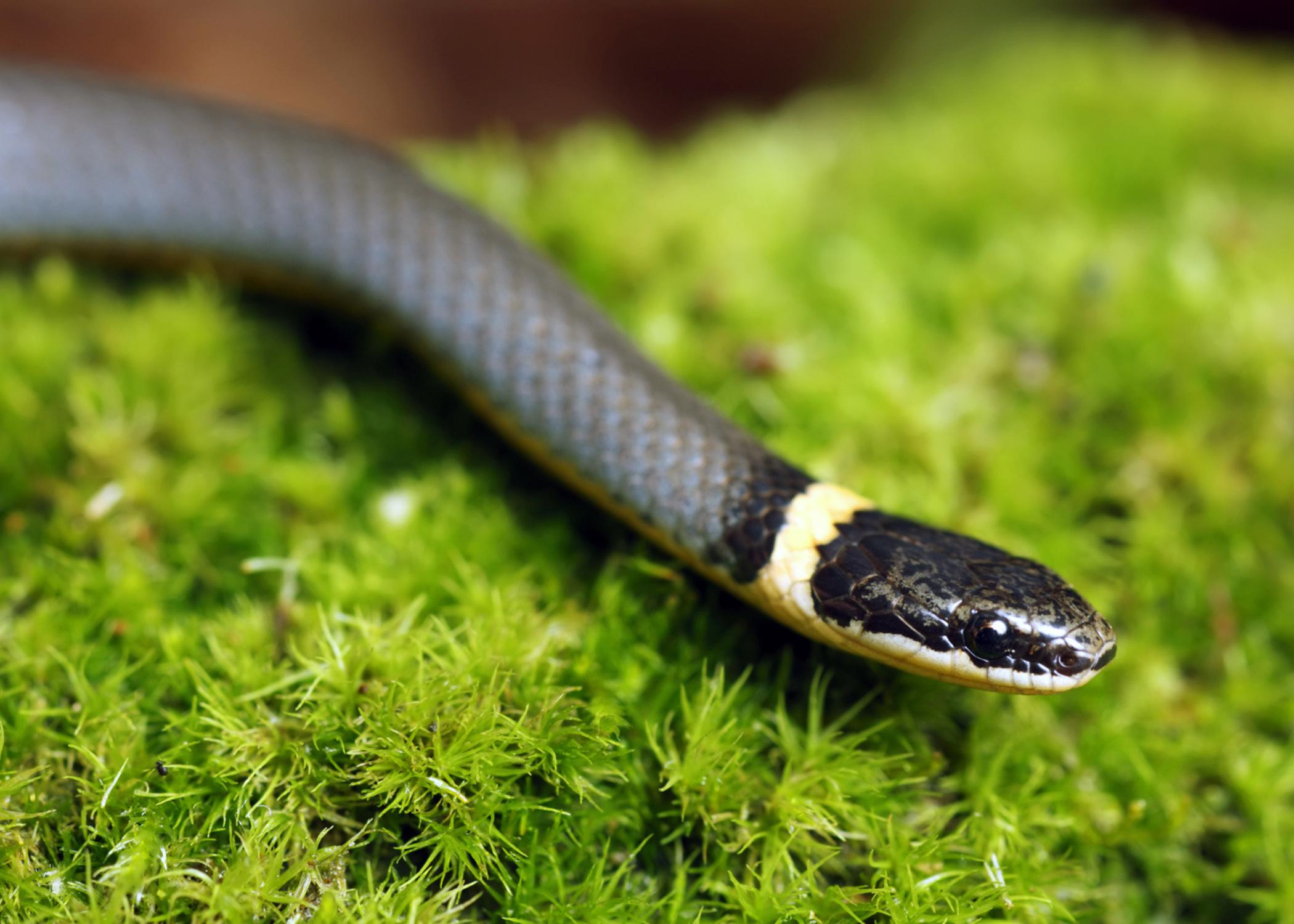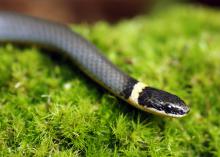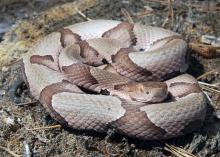Information Possibly Outdated
The information presented on this page was originally released on May 30, 2014. It may not be outdated, but please search our site for more current information. If you plan to quote or reference this information in a publication, please check with the Extension specialist or author before proceeding.
Stay safe around snakes, but let them do their job
MISSISSIPPI STATE -- Despite most people’s fears, snakes are an important part of our natural world and are also helpful to us in many ways.
All snakes are predators, meaning they feed on other animals. Snakes kill and eat rats, mice, moles, insects and other pests that can damage crops and property or spread disease. Because snakes can get into places that other predators cannot or will not go, they can capture rodents that threaten livestock feed or farming equipment and supplies.
Some snakes, such as king snakes, milk snakes and black racers, commonly eat other snakes, including venomous ones.
Snake venom is also being studied for its possible medical uses in treating blood and heart problems and controlling harmful bacteria.
When people encounter a snake in or around their home, they are understandably concerned about whether it is dangerous. Mississippi has about 50 different species of snakes, but in most cases, snakes that live near people -- garter, ringneck and rat snakes -- are harmless.
Only six species found in the state are venomous -- sometimes incorrectly called “poisonous.” These are the copperhead, cottonmouth or water moccasin, coral snake, canebrake or timber rattlesnake, pygmy rattlesnake and eastern diamondback rattlesnake.
In Mississippi, all but one of these venomous snakes has a flat, triangular-shaped head with vertical, cat-like pupils in their eyes. The exception to this rule is the coral snake, which has round pupils and an oval head.
Several non-venomous snakes have colors and patterns similar to those of venomous snakes, so the best way to avoid a bite is to avoid the encounter altogether. It may be hard to believe, but the majority of people hospitalized with a snakebite were bitten while trying to kill the snake. Had they simply taken two steps backward and given the animal some space, it is likely that the whole unpleasant, expensive experience could have been prevented.
Preventing and discouraging snakes and their prey from living near or in your home is the best way to control them. There are no repellents, poisons or other chemicals approved for snake control. There is no documented evidence that home remedies, such as mothballs, sulfur or cayenne pepper spray, are effective.
In early spring, the cool weather drives snakes to seek warm spots, such as metal cans, black surfaces or other heat-conducting items. During warm summer months, they are attracted to cool, damp shelter.
Remove these hiding places around your home and outbuildings, including stacks of boards or firewood, rock piles and weeds. Seal off gaps around foundations or porches with packed soil or rigid materials, such as bricks or small-mesh metal hardware cloth. Snakes may push through loose soil and will use holes made by rodents, but they cannot dig.
Secure animal food in closed containers to discourage rodents and the snakes that eat them.
Sometimes, in spite of prevention, a snake will still find a way to enter a house. One way to remove a snake is to sweep it with a broom into a box that can be closed and sealed. Release the unwanted visitor at a site far away from other houses.
You can also capture snakes using rodent glue boards. Tack or glue two to four rodent glue traps on one side of a 1/4-inch plywood board measuring 16 by 24 inches. Drill a 3/4-inch diameter hole in one corner and insert a rope though the hole to provide a safe way to handle the board and trapped snake. Place the board against an open section of wall where the snake is likely to travel.
Remove live, captured snakes by pouring common cooking oil on them. The oil breaks down the glue, so you can then remove the snake gently with a stick or pole. Use glue boards indoors or under outdoor structures. Be sure that children, pets and wild animals cannot reach them. The glue is messy and difficult to remove from snakes and other animals.
Do not attempt to grab a snake by the tail; it can easily and quickly strike the hand that is holding it.
It is illegal to buy or sell a native snake or snake part in Mississippi. The black pine, eastern indigo, rainbow and southern hognose snakes are listed as endangered in Mississippi and receive special protection. Legal status of species may change, so check with the Mississippi Department of Wildlife, Fisheries & Parks’ Museum of Natural Science in Jackson if you have questions or concerns.
Except in the rare cases involving venomous snakes, it serves very little practical purpose to kill snakes found on your property or lying on roadways. Even though most snakes in Mississippi are not legally protected, it is better for you and them to leave them alone if they are not causing a problem.
After all, they do have an important job to do.
If you would like more information about snakes, consult Mississippi State University’s Extension Information Sheet 0641, “Snakes Alive! How to Identify Snakes.”

Editor’s Note: Extension Outdoors is a column authored by several different experts in the Mississippi State University Extension Service.







